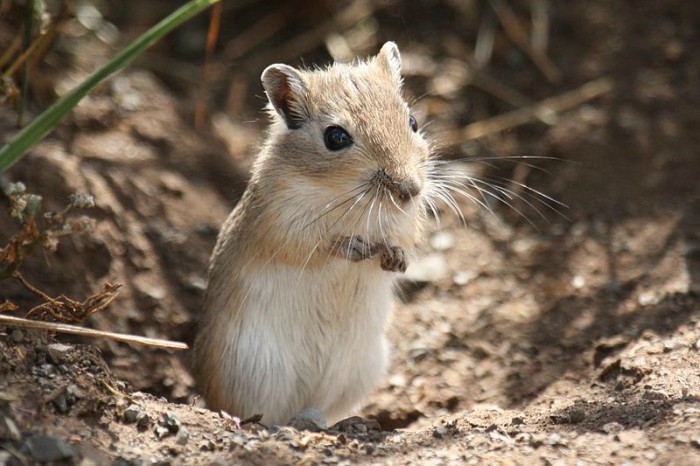Biologists rely on animal models to answer important questions that can’t be addressed with cells in a dish. Often, these animals are deliberately inbred; a less diverse population of animals means that data obtained from experiments with these animals will be less noisy and easier to interpret, so fewer animals are needed for meaningful results. Other “non-model” organisms like hamsters and gerbils are usually outbred. In theory, this means that the animal population being used has greater genetic variation, but in practice, it simply means that siblings are not intentionally mated to create truly inbred strains. In a report published in G3: Genes|Genomes|Genetics, Brekke et al. set out to determine the amount of genetic variation in separate colonies of supposedly outbred Mongolian gerbils (Meriones unguicalatus).
The authors used high-throughput sequencing to identify single-nucleotide polymorphisms (SNPs) in three separate colonies of gerbils. They found that each population had unique SNPs, suggesting genetic divergence between the populations. This is particularly noteworthy because all three colonies were started using gerbils purchased from the same source—so, ostensibly, they should be genetically indistinguishable. The authors point out that the realities of maintaining an animal colony make it impossible for such similarity to be maintained long term; animals are moved, new colonies are started, and logistical and ethical realities all mean that divergence due to genetic drift and founder effects is the rule, not the exception.
That isolated colonies can harbor dramatic genetic differences may contribute to the so-called replication crisis. If two independent researchers believe they are using genetically identical populations—but they’re not truly the same—their results can be inconsistent or unrepeatable. For example, previous reports have stated that genetic diversity in gerbil populations is relatively low, but these reports are biased by divergence in the “outbred” population being studied. While isolated colonies of laboratory animals are susceptible to becoming less genetically diverse, Brekke et al.’s findings suggest that diversity is maintained across many different populations. Effective breeding using different colonies could capture a range of diversity more representative of wild populations.
Although animal models are often described as either “inbred” or “outbred,” perhaps merely labeling a model as “outbred” is misleading. The authors recommend using sequencing to characterize variation within laboratory animal populations before designing studies, allowing the results to be properly interpreted.
CITATION













